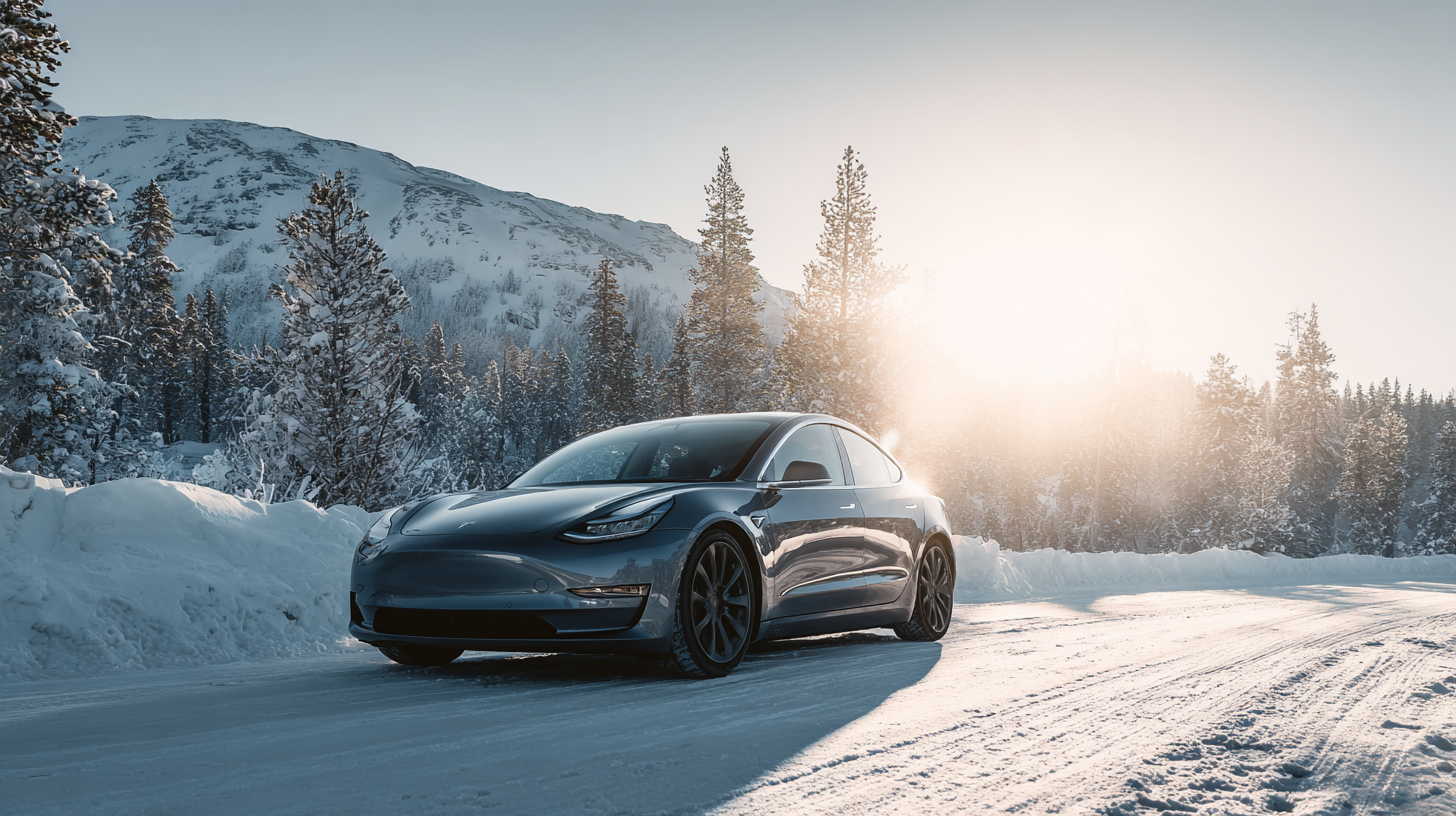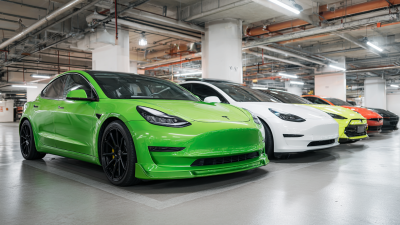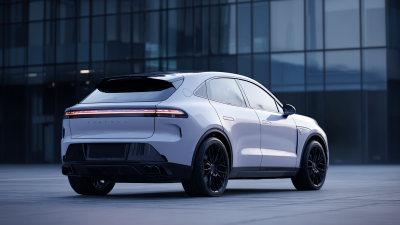 As the adoption of Electric Vehicles (EVs) continues to surge,
with global sales reaching a remarkable 6.6 million units in 2021 alone,
it is imperative for users to enhance their EV experience to fully capitalize on this innovative technology.
According to a report by the International Energy Agency, the total number of electric cars on the road
surpassed 16 million in 2021, showcasing a growing momentum in the automotive sector.
However, many drivers remain unaware of the crucial steps they can take to optimize their EV ownership.
As the adoption of Electric Vehicles (EVs) continues to surge,
with global sales reaching a remarkable 6.6 million units in 2021 alone,
it is imperative for users to enhance their EV experience to fully capitalize on this innovative technology.
According to a report by the International Energy Agency, the total number of electric cars on the road
surpassed 16 million in 2021, showcasing a growing momentum in the automotive sector.
However, many drivers remain unaware of the crucial steps they can take to optimize their EV ownership.
From efficient charging practices to understanding the nuances of regenerative braking, these essential tips aim to empower EV owners and enhance their driving experience. By leveraging industry insights and best practices, individuals can not only improve their vehicle's performance but also contribute to a more sustainable future as part of the global transition towards electrification.
Understanding your electric vehicle (EV) range and charging needs is crucial for maximizing your experience as an EV driver. With cold weather significantly impacting battery performance, it's important to note that driving range can diminish by as much as 40% in frigid conditions. According to industry studies, this reduction often leads to longer charging times and may require drivers to seek alternative charging options more frequently than in warmer weather. Therefore, having a comprehensive understanding of your vehicle’s range limitations—especially during winter months—can help you plan your trips more effectively and avoid unexpected charging delays.
Furthermore, accessibility to charging infrastructure is becoming increasingly important as more people transition to electric vehicles. Current data suggest that while expanding fast-charging stations could enhance coverage significantly, up to 94% of U.S. counties would still face challenges in achieving 75% fast charger coverage without adequate investment in infrastructure. Additionally, drivers are expressing growing concerns regarding charging accessibility, with reports indicating that many have experienced frustrating wait times at public charging stations. As charging solutions become a top priority for EV drivers, making informed decisions about home charging capabilities and understanding the local charging landscape are essential steps toward an optimal EV experience.
| Tip | Description | Range Impact | Charging Time |
|---|---|---|---|
| Understand Your Range | Familiarize yourself with your EV's range and how it fluctuates based on driving style and conditions. | Up to ±30% | N/A |
| Plan Charging Stops | Use apps to find charging stations along your route and plan your stops accordingly. | N/A | Varies by station |
| Use Eco Driving Mode | Activate eco mode to optimize battery usage and extend your range. | +15% | N/A |
| Battery Preconditioning | Precondition the battery during charging to improve efficiency, especially in cold weather. | +10% | N/A |
| Regular Software Updates | Keep your vehicle's software up to date for optimal performance and efficiency. | N/A | N/A |
| Efficient Charging Practices | Charge between 20-80% for optimal battery health and performance. | N/A | 4-8 hours |
| Understand Charging Stations | Familiarize yourself with different types of chargers (Level 1, Level 2, DC fast charging). | N/A | 1-30 minutes (depending on type) |
When it comes to maximizing your electric vehicle (EV) experience, selecting the right home charging setup is crucial. The type of charger you choose should align with your daily routines and driving habits. Level 1 chargers, which are standard household outlets, are suitable for those who have limited daily mileage and can charge overnight. However, for frequent drivers or those who need quicker charging times, investing in a Level 2 charger can significantly reduce charging duration, allowing you to fully replenish your battery in a matter of hours rather than days.
Additionally, consider your home's layout and parking situation. If you have a garage or a dedicated parking space, setting up a wall-mounted Level 2 charger might be the most convenient option. Ensure that your electrical system can handle the additional load, and consult with a professional if upgrades are necessary. An effective charging strategy also includes utilizing off-peak electricity rates, which can not only save you money but also supports a greener energy grid. By tailoring your charging setup to your lifestyle, you'll enhance the overall convenience and efficiency of owning an electric vehicle.

As the popularity of electric vehicles (EVs) continues to rise, navigating public charging stations has become a critical aspect of the EV experience. One of the significant challenges users face is the prevalence of “zombie stations”—charging points that are either malfunctioning or occupied by non-EV vehicles. According to a recent report, the development of charging infrastructure is key to supporting the growth of the EV industry, which is estimated to require an additional 1.8 million charging points by 2025 to meet increasing demand.

To effectively navigate public charging stations, EV owners should consider utilizing mobile apps that provide real-time updates on the availability and functionality of charging points. This can help minimize “charging anxiety” and enhance user confidence. Furthermore, with many automotive companies now sharing their proprietary charging networks, the availability of compatible charging stations is expanding rapidly. Comprehensive data from industry reports indicate that cities are increasingly investing in diverse charging scenarios to alleviate congestion and better serve EV drivers, ultimately paving the way for a more accessible and sustainable electric vehicle ecosystem.
Eco-driving techniques are essential for maximizing the performance of your electric vehicle (EV). One effective strategy is to maintain a steady speed, which significantly improves energy efficiency. Rapid acceleration and hard braking can deplete the battery faster, so gradual changes in speed allow for optimal energy usage. Utilizing regenerative braking, frequently found in modern EVs, can help recapture energy when slowing down, further extending your driving range.
Another key technique is to utilize energy-efficient routes. Many navigation systems offer options that consider not just the shortest distance but also factors like elevation changes and traffic conditions. When possible, plan your trips during off-peak hours to avoid stop-and-go traffic, which can negatively impact energy consumption. Additionally, pre-conditioning your vehicle while it's still plugged in helps maintain a comfortable cabin temperature without using battery power during your drive, ensuring you maximize your EV’s performance on the road.
Staying informed about electric vehicle (EV) incentives and maintenance is crucial for enhancing your EV experience.
Government incentives can significantly reduce the initial cost of your vehicle, making it more affordable. It's essential to research local and federal incentives, such as tax credits and rebates, which vary by region. Joining online forums or local EV clubs can also keep you updated on changes in the incentives landscape, ensuring you don't miss out on potential savings.
Maintenance is another key aspect of EV ownership that contributes to overall satisfaction. One major tip is to familiarize yourself with your EV’s maintenance schedule. Most electric vehicles require less maintenance than traditional gas-powered cars, but regular checks on the battery system and brake components are still necessary. Additionally, consider investing in software updates provided by your manufacturer, as they can improve performance and efficiency over time. By staying proactive with maintenance and tax benefits, you can maximize your electric vehicle experience and enjoy the journey ahead.






